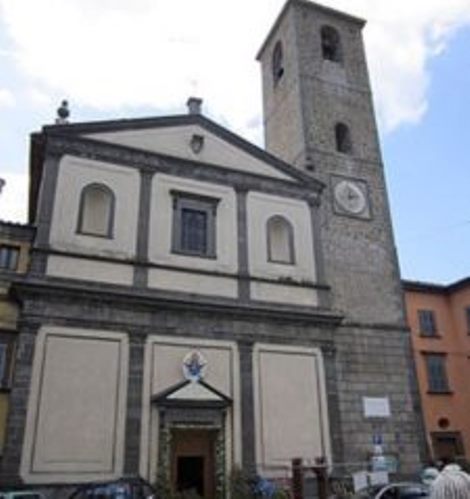
The tremendous earthquakes that hit and ravaged the region in 1695, 1755, and 1759 led to the Friars Minor leaving their church in S. Francesco Vecchio (today known as Belvedere). A new Church and convent started to be built in the district of Vocabolo Calvario, on a hill west of Bagnoregio, in 1765. Years later, the friars moved to the new monastery in 1774. It took more time to finish the church since it was opened in 1803 and consecrated in 1852. The sacred edifice features an inverted-Latin-cross shape and a single nave. The design met the need of a new project that included a road passing behind the church (today faced by a street). Inside the building, an altarpiece depicting Blessed Andrew is placed in a chapel on the right-hand side. Other two chapels contain an altarpiece with the crucifixion of Christ and a statue of St. Anthony of Padua. On the left wall, there’s a chapel with the plaster statue of St. Francis, then a painting reproducing the Immaculate Virgin and a representation of St. Joseph of Cupertino. The presbytery preserves a high altar realized in refined polychrome marble and an altarpiece depicting the miraculous healing of St. Bonaventure. A chapel dedicated to St. Bonaventure stands on the left of the presbytery. As remembered by a carved inscription, it was built in 1847 using the residual stones of the saint’s house.
A causa dei terribili terremoti che investirono e devastarono il territorio prima nel 1695, poi negli anni 1755 e 1759, i Frati Minori furono costretti ad abbandonare la loro Chiesa in località S. Francesco vecchio (Belvedere di oggi) e nel 1765 iniziarono a costruire una nuova chiesa e un nuovo convento, in vocabolo Calvario, nella collina ad occidente di Bagnoregio. Così, dopo una decina di anni, nel 1774 andarono ad abitare il nuovo convento. La chiesa, invece, richiese più tempo e fu aperta al culto nel 1803 e consacrata nel 1852. Fu costruita ad unica navata, a croce latina capovolta per soddisfare le necessità del nuovo progetto che includeva il passaggio della strada, non davanti alla chiesa, come oggi, ma dietro di essa. La chiesa all’interno, nella parete di destra, presenta una cappella con una pala raffigurante il Beato Andrea; di seguito un’altra cappella con pala del Cristo in Croce ed infine la cappella con la statua di S.Antonio da Padova. Nella parete di sinistra la cappella con il simulacro in gesso di S.Francesco; poi una pala che riproduce la Vergine Immacolata, infine la pala con S. Giuseppe da Copertino. Nel presbiterio l’altare maggiore in pregevoli marmi policromi e al centro, dietro il coro, la pala rappresentante il miracolo della guarigione di San Bonaventura. A sinistra del presbiterio una cappella dedicata a S. Bonaventura, eretta nel 1847 con le pietre residue della casa del Santo, a Civita. All’interno una scritta ricorda la costruzione e la provenienza del materiale utilizzato.




